William Augustus Murray Prior
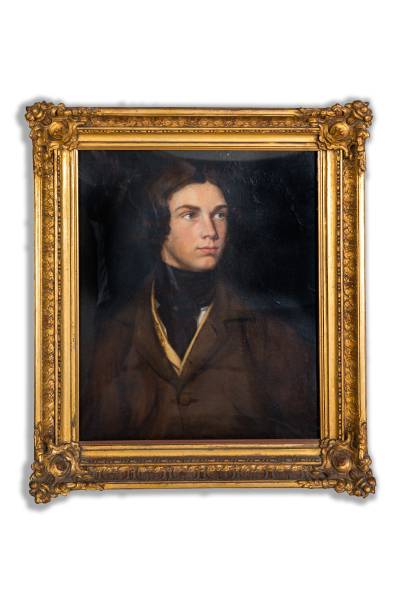
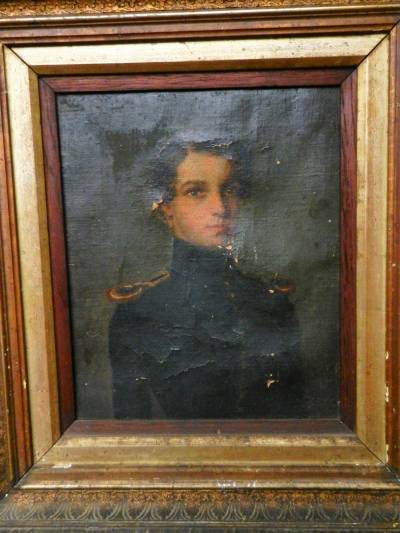 Two portraits of William M-P.
Two portraits of William M-P.
The first was identified as William by Minnie Violet (Vi) M-P.1) E. Sterling M-P understood that the second portrait shown here was also a self-portrait by William.2) As there was no known discussion about these paintings by these two (and it is not known if they even knew each other), it is highly likely that their separate identification of the paintings is correct. For other presumed self-portraits, see Thomas Prior's album
William was Thomas and Eliza Prior's younger son, a soldier and artist. He was born on 18 November 1821 at Bruges, then in the Netherlands, now in Belguim.3) He was baptised at Bray in Berkshire on 19 January 1825.4) His baptism as a three-year old is further confirmation that his parents were evangelical Anglicans. His second name was probably a tribute to his uncle Augustus Skynner.5)
William joined the army as an ensign6) in the 59th (2nd Nottinghamshire) Regiment of Foot. As evidence from this time, we have: some loose blank pages, originally part of a book, with the inscription ‘W.A. Murray Prior. 59th Regt.”; The Kings Regulations and Orders for the Army, 1 June 1837, with the name in it of 'W A Murray Prior 59th Regt'7); and a 1842 account book with the name W.A. Murray-Prior, Ensign 59th Regiment, Jersey.8) 9) His service with the 59th Foot Regiment is evidenced by his army record for 184110) and his sketchbook as described below.
William died at Portsmouth from a gunshot wound on 5 February 1844 – presumably an accident when training. He was buried in the Portsmouth Garrison Cemetery. Decades later when listing his family, William's brother TLM-P wrote that William died aged 22 years, 2 months and 18 days old – a precision which suggests profound grief.11) Five years later, TLM-P and his wife named their second son William Augustus: sadly this William died as a baby.12)
William's Art
William was also an artist who studied under Thomas Cooper.13) The following damaged unframed painting of herefords is in Cooper's style (see Cooper painting) so may be one of William's in imitation when he was learning. Alternatively, Jemima gave TLM-P at least one painting by Cooper, one with trees in it, which TLM-P described as having been bought by their father, so this painting maybe by Cooper himself.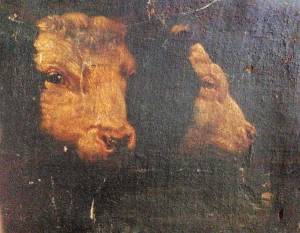 14)
14)
The seriousness with which he took his art is seen by a very large, thick, heavy album in which he collected his sketches and examples of art.15) There is also a smaller volume engraved ‘Bruges 1841’ containing lithographs of sketches of life in Bruges.16)
As noted, it is probable that William painted portraits of his sister and mother, as well as self-portrait/s. The following sketches are definitely or probably William's.17).This sketch has the faint signature W.M.P.(a dash at line level was then a full stop). 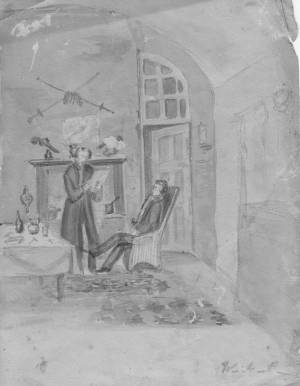
This second sketch is on the other side of the paper, so is presumably also by William, and of his army comrades. 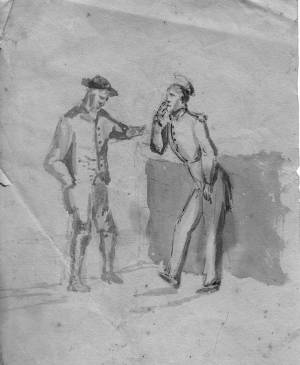
The third sketch has the faint date 1818 and is probably by William of an army comrade.
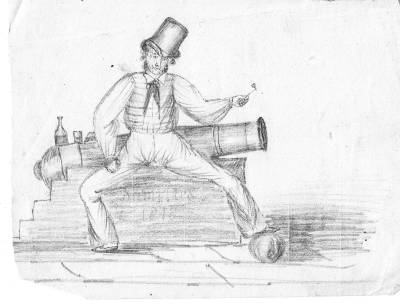
This badly deteriorated painting on wood was believed to be by William. 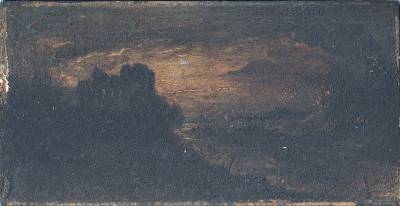
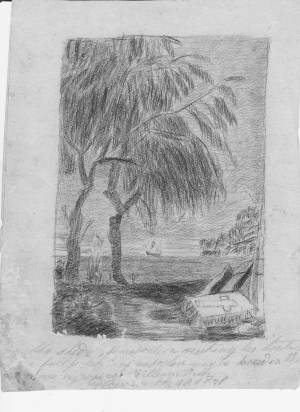 The writing below this sketch is unclear but has the name William Prior. The next sketches are on the reverse:
The writing below this sketch is unclear but has the name William Prior. The next sketches are on the reverse:
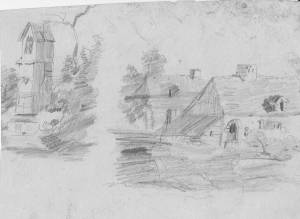
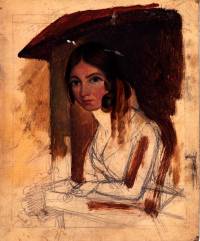 This unfinished sketch was from a collection most likely drawn by William M-P. Given the age of the woman and that it was kept by the family, it is perhaps one of his step-sisters, Jemima or Louisa.
This unfinished sketch was from a collection most likely drawn by William M-P. Given the age of the woman and that it was kept by the family, it is perhaps one of his step-sisters, Jemima or Louisa.
In addition, in his will, TLM-P left his daughter Rosa Praed, a 'portrait of my Mother by W.A. M. Prior'18)
William also left behind a sketchbook with his drawing and art works, often signed and dated.20) The name in the front cover is 'Captain Prior, 1845'. This is a year after his death, so we can assume it was passed on to William's father who in 1845 was a captain in the army. It is this sketchbook that confirms that William was a talented and prolific artist. For more, see William's sketchbook